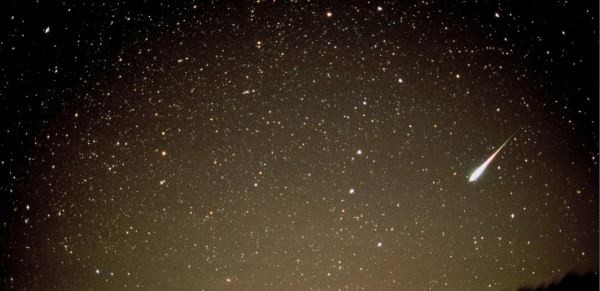The Meteor Shower known as Lyrid could send fireballs across the night sky this April. According to a Pennlive Patriot-News report, the Lyrid Meteor Shower is expected to reach its highest peak in the night sky this coming Tuesday, April 21, until pre-dawn on Wednesday, April 22.

The report said that some 10 to 15 meteors can usually be seen in the night sky at this year's peak. However, Lyrid could send as many as 60 to 100 meteors per hour for April alone--but that is not yet confirmed. The meteor shower is known for its spectacular lights show, sending bright fireballs across the sky.
According to Pennlive Patriot-News, the best chance to view the meteor shower will be in the early morning on Monday, April 20 until the next day. However, it is still worth the watch on April 22 as it is expected to send fireballs until that day.
Lyrid meteor shower can be seen this April; Here are the tips for perfect viewing
According to Earth Sky's report, the annual Lyrid Meteor Shower can be seen each year around April 16 to 25. The path of the Lyrid meteors can be traced backward, showing that it seems to radiate from the constellation of Harp and Lyra near the brilliant star known as Vega.
Lyrid cannot always be seen near Vega since the meteors are about 60 miles or 100 kilometers away from the Earth's atmosphere, while Vega burns up in the planet's atmosphere a trillion times the distance of Lyrid--Vega is 25-light-years away from the Earth.

Since the meteor showers begin after the radiant rises, an individual only needs to know the rising time of the meteor shower's radiant point. Vega rises around Lyrid's peak in the north-east around 9:00 P.M. to 10:00 P.M. local time in the Northern Hemisphere. Lyrid will rise through the night sky, beginning at midnight, reaching its highest peak just before dawn.
However, an individual can still observe the meteors in a location away from the city lights, even around the given time. Placing yourself in a very dark and open place and let your eyes adapt to the shadows can help you view the meteor display.
The Lyrid meteor was first recorded way back 2,700 years ago by the ancient Chinese making it one of the oldest meteor showers. The meteor showers of Lyrid came from the comet known as "Thatcher Comet" or "C/1861 G1".
The Earth passes through the debris stream left by the comet in April, each year. The comet stream sends bits of meteors into the upper atmosphere of the planet at the speed of 110,000 miles per hour, making it burn in the atmosphere at about 60 miles up before reaching the ground.
Also Read: Scientists Capture First Cosmic Jet From Galaxy Collision; It Will Get Brighter!
ⓒ 2025 TECHTIMES.com All rights reserved. Do not reproduce without permission.




